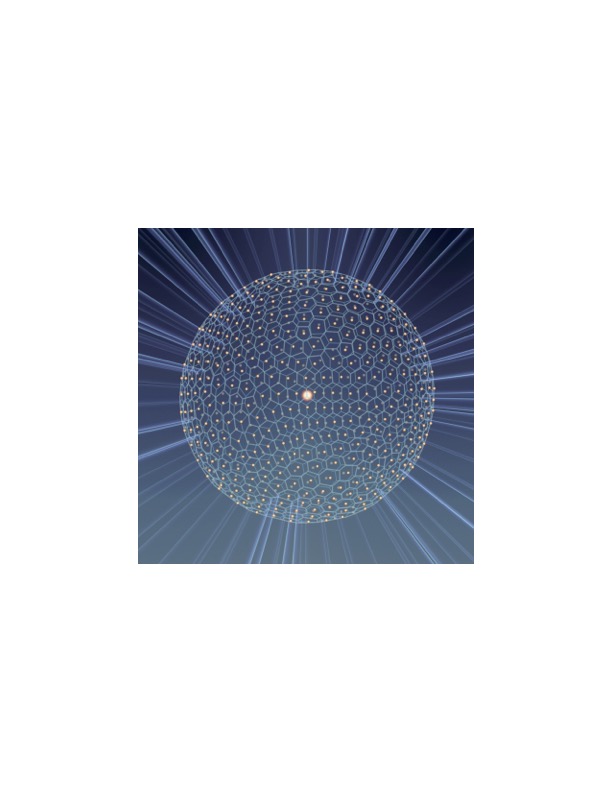Purpose and Methods of Tuning into Consciousness
Dear Readers, Welcome to SC Musings, Blog 36
Quaking, trembling and shaking of our national borders with attacks and counter attacks, echo in the mind and body. Uncertainty numbs, confusion and fear lurk, inter-twined with multiple questions and rumblings, with no immediate answers or solutions. In this tumultuous state, impacted by contexts, both national and global, Narayana Guru’s Atmopadesa Sathakam, Verse 74 (Yati, 2013.p.517) offers temporary respite:
“Innumerable particles of dust in here in earth, and there is no difference in the earth that constitutes the particles; just as inert matter exists in consciousness, consciousness finds its expression here in the body; therefore, when contemplated, this is one”.
Let me attempt here to elucidate and make meaning of the profound wisdom guidance espoused by Narayana Guru in this verse.
Minute and multiple particles of dust make up the earth- these elements, exist separately and we consider them together and holistically as earth. Similarly, consciousness housed in our body, is composed of various elements. Taking many forms like the pre-conscious, sub-conscious and unconscious, it appears inert.
However through contemplation, it is possible to experience the oneness of Consciousness. Andy, artist and devotee of Narayana Guru Parampara has captured the oneness of Consciousness, despite its scatter, in Figure 36.

Let’s now begin with the purpose and methods for tuning into Consciousness, the title of this Blog.
Tuning into Consciousness helps achieve the Transactional Analysis goal of Autonomy, (Berne, 2016.p.158) with its components:
- Awareness
- Spontaneity
- Intimacy
Awareness is being present in the here and now, mindful of self-others-environment; appropriate responses is Spontaneity; and intimacy is described as game free closeness. The foundation of autonomy with its components is internal joy, peace and harmony, known as Sat-Chit-Ananda, Existence-Consciousness and Bliss.
In peaceful environments, we consider and move to these finer aspects of life, even if it’s for brief spells. However, stimuli, even tiny ones from the surroundings penetrate and impact.
I am herewith sharing a happening today which jolted me a bit. While riding a bus to the aircraft from the terminal in Coimbatore, a fellow passenger came down heavily on the driver for not adjusting the temperature inside the bus. The former’s tone of authority caught my attention, and I enquired whether he was the airline staff. A co passenger joined in the tirade, talking of rights to question. Children crying at the back of the bus was the repeatedly given reason to confront the driver.
I agreed, and spoke about the tone and method of questioning; and they went onto accuse the driver of cheating. I gently advised the driver- not to reply- let it be and he did.
These kind of situations do unsettle- I could have ignored and been quiet. However, I believe in voicing my views (most times socially) when individuals are treated unfairly.
Global confrontations on the other hand, create high intensity imbalances. The wisdom pearls from our Guru’s help us to build the competency of fine tuning our consciousness, which help us weather and ground, despite the upheavals.
Guru Nitya invites “us to find in any and all aspects of our beingness/Beingness, apt opportunities to contemplate the ever-present and ever-dynamic oneness of consciousness (Yati, 2013. p.520).” Guru goes on to say:
“When you attend to the nearly infinite number of finite motes, each in its own way gives you an experience of pain or pleasure…. When you attend to your own ground, it is a deeper experience than what you have on the surface. It is a serene joy. Within it you are self-contained. There is no duality of “I” and the ‘other’. It is like returning to one’s real home. It’s one’s own beingness. This is not a philosophical state. It is a very rich experience, full of love. There is an all-filling grace and benevolence permeating it (p.520, 521)”.
Thus the clearly established purpose is
The bus driver and I connected at a deeper level and avoided a trigger for a potentially ugly scene.
My hope is that ‘grace and benevolence permeate’ our universe giving us ‘rich experiences full of love’.
Turning our attention and awareness inside to listen to our body and mind, begins the journey of ‘fine tuning consciousness’. When repeated continuously, regularly, it gets us into a ‘jing’ (Lam, 2011. p.89,90) state of stillness and quietness. We do not have to sit meditating for hours, but, Intentful and mindful inner journeys do bring peace and harmony.
Taichi and yoga are also effective ways to tune into deeper layers of consciousness. Individuals ask at times- what is the use of me alone doing it- what about the rest??. Yes, we are ‘motes’ or specks of dust- but we belong in this universe and change begins with a speck.
Another idea and experience which dawned and is taking shape is openness to receive. Many and most times, we become impermeable to receive; circulating slogans and concepts inside, as we block out fresh reality. Taichi learnings in Australia and in the weekly sessions with Rani, have opened up my intake pores. Openness, I discover requires us to be in the here and now, and trust in the flow of life.
My Dear Readers,
We have meandered through uncertainty to seek clarity, depth and oneness.
Let us see where this journey takes us in the next blog- maybe explore openness and flow.

References
Berne, E. (2016), (original work published 1964). Games people Play: The psychology of human relationships. Penguin Books, UK.
Lam, P., & Miller, M. (2011). Teaching tai chi effectively [E-book]. Narwee, Australia: Tai Chi Productions.
Yati, G. N. C. (2013). (original work published 2003).That alone, the core of wisdom: A commentary on atmopadesa satakam, the one hundred verses of self-instruction of Narayana Guru. New Delhi: D. K. Printworld.